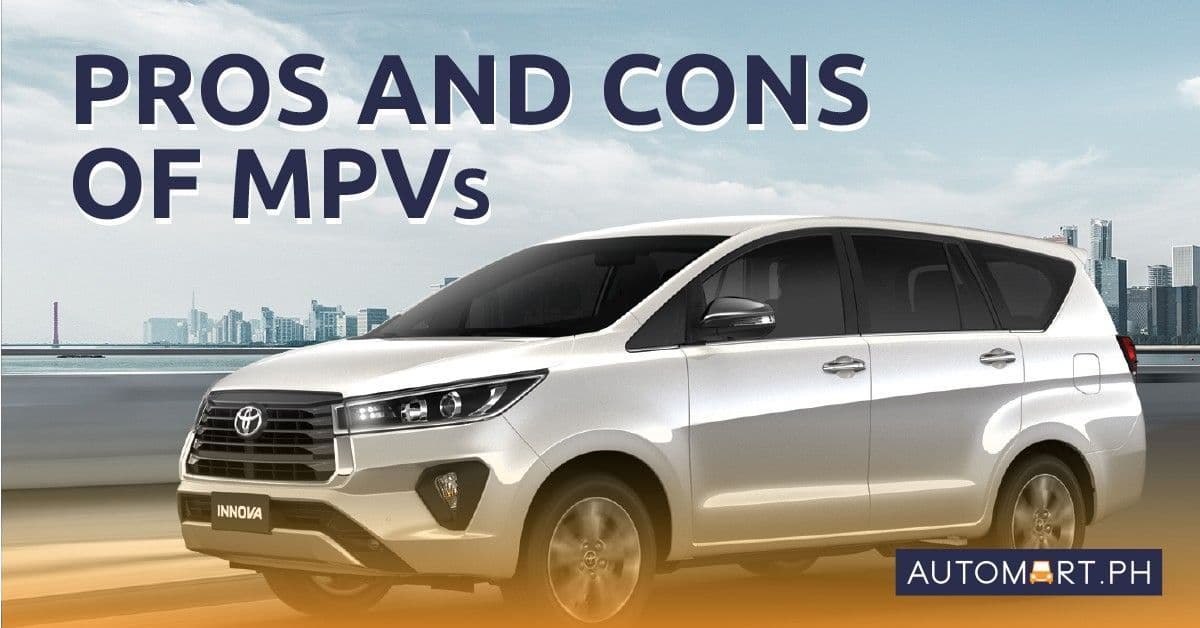
The Pros and Cons of Driving MPVs
Updated on December 18 2025
The family-friendly MPV or Multi-Purpose Vehicle is a mainstay on Philippine roads. The trend started in the mid-1970s with the Toyota Kijang, locally known as the Toyota Tamaraw, the predecessor of the Tamaraw FX, Revo, and Innova we know today.
Before the MPV, the AUV was King
Back then, the Tamaraw was an AUV or Asian Utility Vehicle with a primary emphasis on 'utility' more than anything else. Everything changed when the Toyota Tamaraw FX debuted in 1993. It came with three rows of seats, dual air-conditioning, and five doors for easier ingress and egress.

Mitsubishi entered the MPV fray in 1997 with the Adventure MPV, followed by the Fuzion in 2005. The fourth-generation Tamaraw FX (more popularly known in Philippine auto culture as the Toyota Revo) was supposed to debut in 2000. However, the launch of the Mitsubishi Adventure forced Toyota to unveil the Revo earlier than expected in 1998.

And by 2004, Toyota has the smaller Avanza and larger Innova to replace the Revo MPV. On the other hand, the Mitsubishi Fuzion bid goodbye in 2016 to make room for the now popular Xpander MPV. Toyota also has the Rush to compete head-to-head with the Xpander.
Why do Pinoys love MPVs?
MPVs are primarily known to offer more seating and cargo space than a sedan. And even though MPVs are less rugged and stylish than an SUV or Sport-Utility Vehicle, they have higher ground clearances than sedans and hatchbacks, making them ideal for dealing with rougher pavement and flooded roads.

No doubt, SUVs and crossovers are more popular than ever. Still, Filipino families cannot get enough of MPVs like the Toyota Innova and newer variants like the Mitsubishi Xpander and Toyota Rush for many reasons like space, practicality, and seating flexibility.
However, there are also disadvantages to consider.
Multi-Purpose Vehicle (MPV): Pros and Cons
Pros
A. MPVs offer upwards of five, six, or seven seats with flexible seating arrangements.
B. Other MPV variants like the Toyota Innova can seat up to eight passengers (including the driver).
C. More storage space, especially when folding the second and third-row seats.
D. Roomier interior with more legroom, headroom, shoulder-room, and elbow room.
E. Greater ride comfort over long distances.

Cons
A. MPVs are less stylish than SUVs and crossovers, and it has more to do with the MPV's utilitarian roots.
B. MPVs are more challenging to park than sedans due to their length and width. However, MPVs are no harder to park than a midsize pickup truck like the Nissan Navara or Toyota Hilux.
C. MPVs generally consume more fuel than a sedan, although the availability of diesel engines in most MPVS will slightly offset this fact.
For the record, a 2019 Toyota Innova E A/T gasoline model achieves 6 km/L in city driving and around 12 km/L on the highway. On the other hand, the diesel model goes 9 km/L (city) and 12 km/L (highway). No wonder the Innova is only sold today as a diesel!
Conclusion
The pros outweigh the cons when it comes to buying an MPV. Yes, SUVs are more stylish and macho than an MPV, but MPVs are more comfortable to drive and can accommodate more passengers and cargo in the real world.

If you require a no-frills vehicle for your everyday activities, the MPV remains king. The question is: Would you mind driving or owning one?